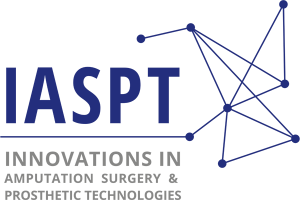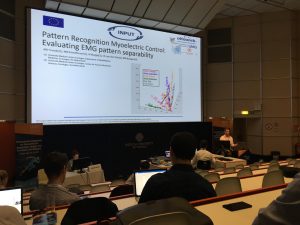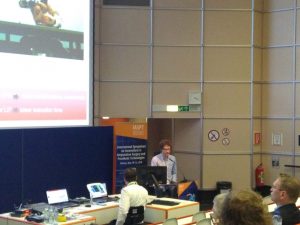


After Chicago, the IASPT took place for the second time in Vienna and was able to convince with high-quality speakers and visitors. This symposium shall bring together key players of Industry, Medicine, Therapy, Engineering, Surgery, Rehabilitation, Prosthetics and R&D to explore one another’s worlds, deepen our collaborations, and merge efforts to restore function after limb loss. At the congress, several members of the input project were able to present and discuss their research results to experts.
contributions of INPUT consortium:

Investigation of a method to identify socket-limb displacements in trans-radial amputees – B. Pobatschnig/AT
Providing secure fastening requires fundamental design and construction features for sockets. Due to the stiffness of the socket, motion between the socket and the residual limb (pistoning) can affect myoelectric control. Pattern recognition based myoelectric control provides more intuitively and naturally control. However, classification problems due to electrode shifts can limit prosthesis control. In literature, pistoning are less documented for upper limb prosthetics. The aim of this work is, therefore, a determination of an adequate method to measure socket-stump displacements in trans-radial amputees…

Pattern recognition myoelectric control: Evaluating EMG pattern quality – A. Franzke/NL
Pattern recognition based myoelectric control for upper limb prostheses has gained increasing attention in the last years as it seems to offer more intuitive control than conventional, direct control. However, for such control to be feasible, the prosthesis user needs to have sufficient control of muscle contractions to create EMG patterns suitable for pattern classification. Few studies have investigated the relation between control ability and EMG pattern characteristics and an evaluation tool for quality of EMG patterns is still missing. We proposed such a tool and investigated whether scores from this tool were related to EMG pattern control ability…

Relation of the arm profile score and the linear index of function. Is the SHAP an adequate functionality assessment of prosthetic use? A case study – F. Unglaube/AT
The Southampton Hand Assessment Procedure (SHAP) is a time-based assessment which is commonly utilised in research and rehabilitation to assess the functionality of upper limb prosthetic devices. However, the SHAP provides no information about compensatory movements due to the prosthetic restoration. The main outcome is the time required to accomplish ADLs expressed by the Linear Index of Function (LIF). However, compensatory movements among transradial amputees seem to provoke future constraints. The Arm Profile Score (APS) makes a statement about deviation from normative subjects based on kinematic data…

Using a serious game to find distinct electromyogram patterns – M. Kristoffersen/NL
Background: Pattern Recognition (PR) control for upper limb prosthetics is based on electromyogram (EMG) patterns that are commonly generated by (phantom) movements matching the desired movements of the prosthesis. Effective PR control requires EMG patterns for different hand movements to be distinct, which is an important goal of training. Conventional training of PR control is long and tedious for the patient and requires supervision. Serious games might make this training more efficient, fun and independent. We compared a serious game with conventional training and ask if serious game training can lead to better outcomes and more distinct EMG patterns than conventional training…
